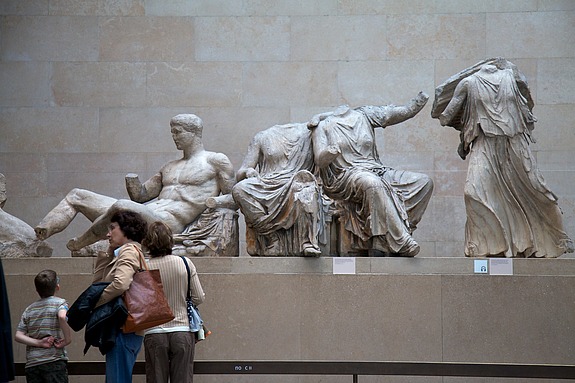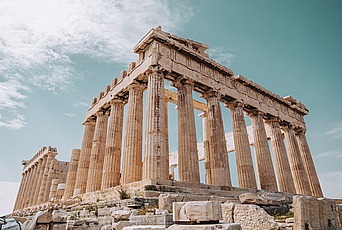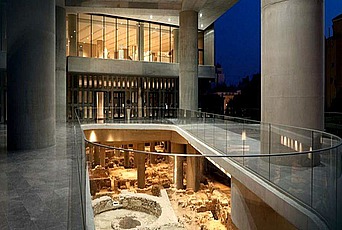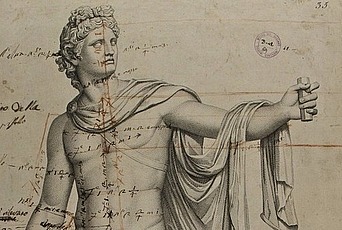Angelos Chaniotis is engaged in wide-ranging research in the social, cultural, religious, legal, and economic history of the Hellenistic world and the Roman East. The author of many books and articles and senior editor of the Supplementum Epigraphicum Graecum, he has worked on war, religion, communicative aspects of rituals, and strategies of persuasion in the ancient world. His current research focuses on emotions, memory, identity, the history of the night, and the history of Aphrodisias (Asia Minor). He is the co-director of the archaeological excavation of Lyktos on Crete.
For il manifesto, Valentina Porcheddu interviews Professor Angelos Chaniotis about the return of the Parthenon Marbles to Athens:
In recent days, the British press has revealed that the negotiations for the return of the Parthenon Marbles to Greece actually concern a long-term loan from the British Museum. In exchange, Greece would lend works that have never left the country before. We have therefore moved from the notion of "repatriation" to a compromise of a political nature which infringes not only the Greek law on heritage but also morality. Still, the foreign press sees these negotiations as a positive outcome. What is your opinion on the negotiations and, in general, on the return of the Parthenon Marbles to Athens?
The British Museum (BM) is under great pressure in this matter, because of the dramatic change of the public opinion in favor of a re-unification of the Parthenon sculptures. The BM also wants to avoid a precedence, by “returning” a monument that it acquired before the establishment of international rules concerning the protection of cultural heritage. On the other hand, the Greek government is under pressure, wishing to score a success a few months before the parliamentary elections. Under such conditions no constructive negotiations can take place, and I am not surprised that the negotiations ended in a complete fiasco, with the British Minister of Culture declaring that the Parthenon sculptures belong to Great Britain. I do not believe that the BM negotiated in good faith; its strategy has always been to present the request of the reunification as a Greek national claim and the keeping of the marbles in its collection as evidence for an ecumenical approach. This is disingenuous. Unlike other monuments removed from their countries of origin in toto, the Parthenon marbles in the British Museum are fragments of an intentionally amputated work of art. This is why it is important to speak of “reunification,” and not of “return.” While the term “return” highlights a legal issue (the return of stolen property), the term “reunification” foregrounds a cultural one. The “reunification” of a monument of universal significance is an ecumenical request.
The Salinas Archaeological Museum of Palermo returned the so-called Fagan fragment to the Acropolis Museum in May 2022. With the same principle, that would be envisaged for the marbles preserved in the British Museum, Greece has lent Italy a statue of Athena. More recently, the Pope (and not the Vatican museums) gave three fragments of the Parthenon to the Archbishop of Athens. How can we frame these actions? Are they useful for repatriation or are they functional to Greek government propaganda?
The “deposit” (in the case of Palermo) and the “donation” (in the case of the Pope) mean the final transfer of property to the Acropolis Museum. This is the solution that was chosen for a fragment of the Parthenon frieze that the University of Heidelberg donated to the Acropolis Museum in 2006, when I was Vice Rector of the university. This was the first Parthenon fragment to be reunited with the sculptures in the Acropolis Museum. This donation was not part of a transaction; it was a one-sided gesture, recognizing the importance of the restoration of a monument of universal significance. This gesture was reciprocated by the Greek side with the temporary loan of an ancient sculpture. I think that this is the model that should be followed by the British Museum. In my view, the only clear, permanent, morally acceptable, and scientifically sound solution is the unconditional donation of the Parthenon sculptures––not exchange, not a loan, not gradual reunification, not conditional possession. Once the British Museum makes an unconditional donation of the sculptures, then the way may be opened for a collaboration between the country’s regional museums and the British Museum for the promotion of Greek culture through periodic exhibitions.
On the other hand, Greece has already implemented policies of this kind with the Stern collection––unclearly formed––only formally returned to the state’s possession but loaned to the MET for ten years. A dangerous precedent…
Not just for ten years, but until 2073. The agreement concerning the Stern collection of Cycladic objects is disgraceful in every respect. It is certain that at least one of the objects in this collection was in the illicit antiquities trade, and experts suspect that some objects are fake. The agreement not only offers legitimacy to a collection of obscure provenance, but it also provides for its enlargement through future donations and loans by other private collectors. Although the government spoke of “repatriation,” in reality, the collection will not return to Greece until 2073. In exchange for the temporary exhibition of 45 objects in a private museum in Greece, Greek public museums will be obliged to offer objects from their collections to the Metropolitan Museum until 2073. And there is no provision that in 2073 the collection will be given to a Greek public museum and not to a private museum (the Goulandris Museum). “Repatriation” of objects from the Cyclades can only have one meaning: exhibition in a public museum in the Cyclades, not in a private museum in Athens, whose collection originates in looted archaeological sites.
The situation is no better in archaeological sites of Greece. The Acropolis of Athens devastated by concrete walkways, the late antique site discovered in Thessaloniki removed to build a subway station...
The damage to archaeological sites started earlier. The battlefield of Marathon was chosen for the construction of the Rowing Center for the 2004 Olympics. The altar of the 12 Gods in Athens was covered for the construction of the metropolitan line. In Thessaloniki, antiquities that make sense only when seen in their original location––an ancient road, shops, and evidence for continuous activities in the same location––were removed for the construction of a metro station, despite the existence of alternatives; approximately 90% will be returned, but not in their exact original location. All these cases are pieces of the same great picture: when monuments are an obstacle for construction works, large investments, or mass tourism, the economic interests take priority over the preservation of cultural memory.
The dissent on part of the Greek archaeologists does not seem to be enough to reverse the cultural policies of the current government. How do you see the future of archaeology and of heritage preservation in Greece?
Deficits in heritage preservation is only one aspect of a whole bundle of issues related to archaeology in Greece. They range from the academic training of archaeologists and the organization of the Archaeological Service to the publication of the finds of excavations, the organization of museums, and the training of tourist guides. Not only the current government but also past governments have failed to see that heritage preservation requires a holistic approach and not ad hoc measures. In short, it requires a strategy, and such a strategy simply does not exist, and it will not exist as long as the treatment of heritage is determined by party politics.
This interview has been reprinted in English by the Institute for Advanced Study. Read the original, published January 27, 2023, at il manifesto.



